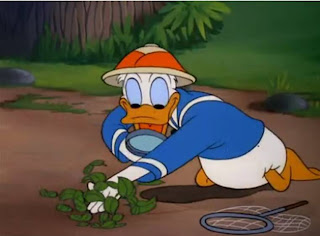Time to put things down in writing and get all of you guys ready for the 2nd half of 2011 as we get ready for fun and excitement in Tweetwatching! So, for the rest of this year, starting August 1, Tweetwatch will be bi-weekly! Yes, every other week, we will have a Tweetwatch of a new or classic Disney film, with fun facts and more to follow.
Here's the basic idea on how to play along:
1. Follow
me and
Disney Film Project on Twitter
2. Grab the movie we're watching, either through Netflix, instant video (Amazon or
Disney Movies Online) or buying it.
3. Subscribe to our
Friendfeed room.
4. On the appointed night, jump in to the Friendfeed room and get your Bluray/DVD cued up.
5. At the right time, I'll tweet or post that we should start the movie, and I'll update the feeds with relevant facts about the production.
It's a fabulous fun time, so make sure you join in. Without further ado, here's the schedule:
Monday, August 1 - 8:30p ET - The Parent Trap
I fully expect that you'll have a tough time tracking this down, but Let's Get Together and watch one of Disney's great classics.
Monday, August 15 - 8:30p ET - The Fox and the Hound
It's the 25th anniversary of this Disney film, and a new DVD/Bluray version is about to be released. Let's check it out.
Monday, August 29 - 8:30p ET - Princess Diaries
It won our listener poll of what show we should do on the podcast, and it made Anne Hathaway a star 10 years ago (has it been that long?).
Monday, September 12 - 8:30p ET - The Great Mouse Detective
I'm wagering that most of you haven't seen the film that started the new renaissance at Disney. This was the canary in the coal mine, so let's check it out.
Monday, September 26 - 8:30p ET - Thor
Yes, it's not a Walt Disney Pictures release, but this one comes out on Bluray/DVD September13, so it's time to watch one of Disney's newest characters.
Monday, October 10 - 8:30p ET - The Lion King
After the 3D release in theatres, one of Disney's biggest animated films hits DVD. Can't wait for this one.
Monday, October 24 - 8:30p ET - Pirates of the Caribbean: On Stranger Tides
You knew this was coming, right?
That will do it for now, but rest assured that Cars 2, Winnie the Pooh and more will show up in November and December. Join in the fun!






























